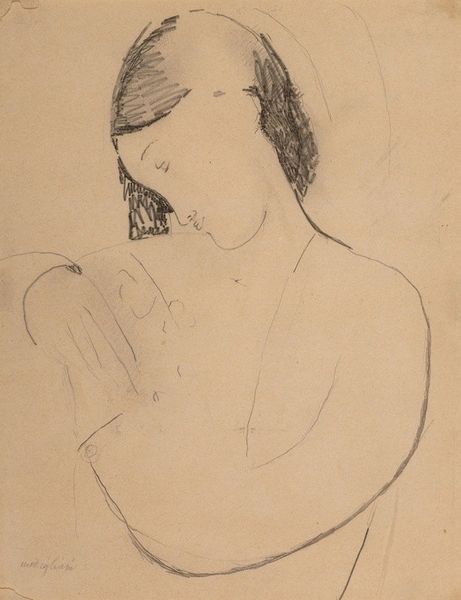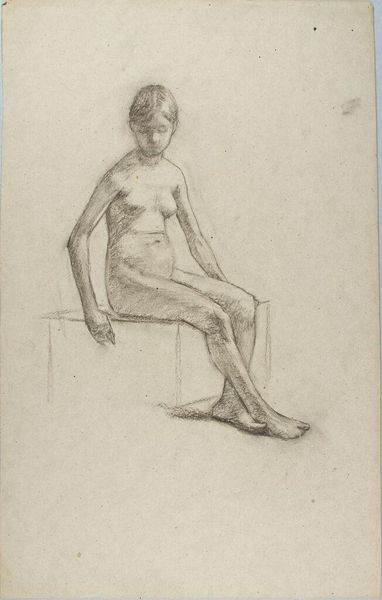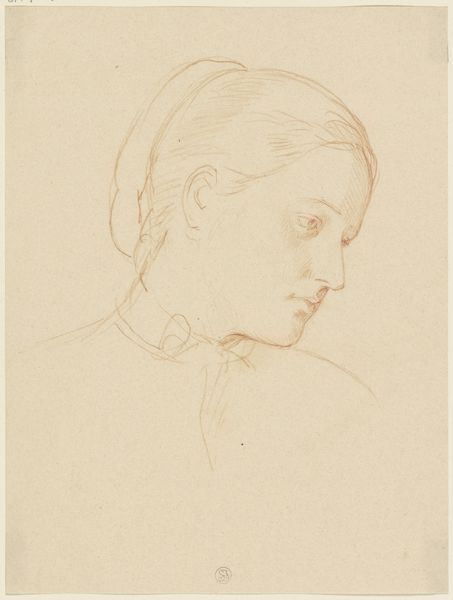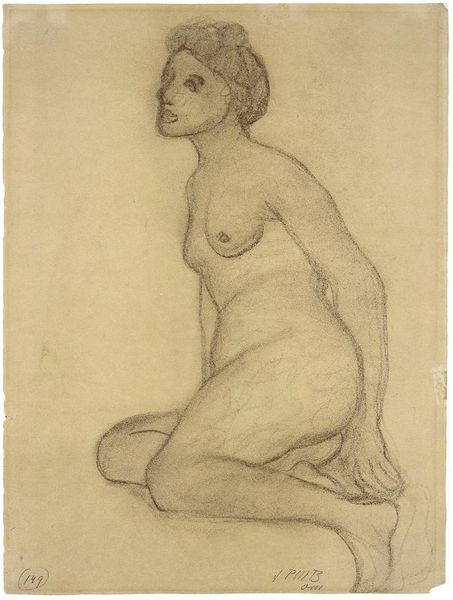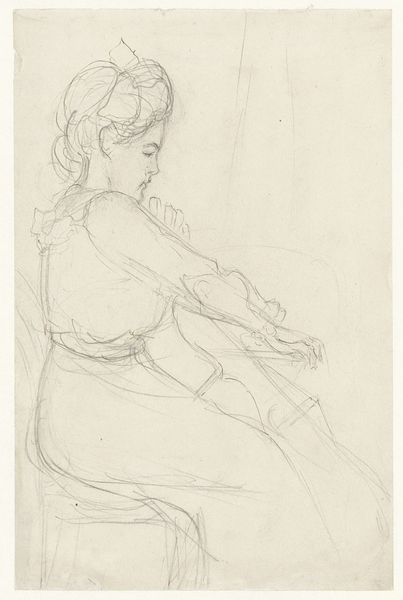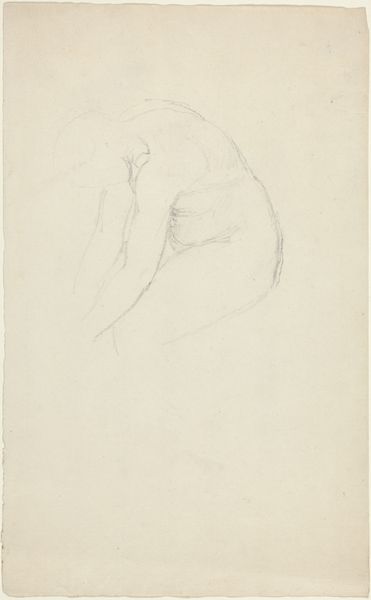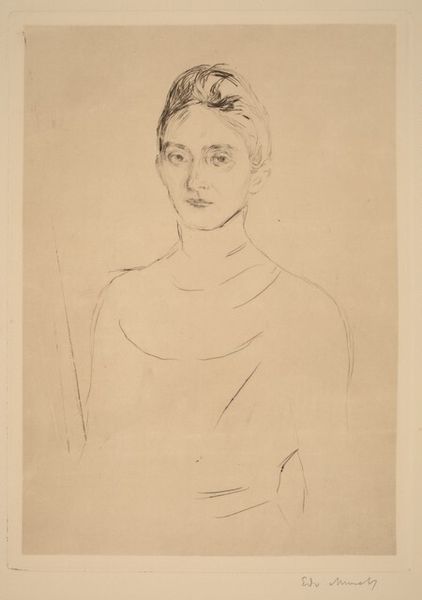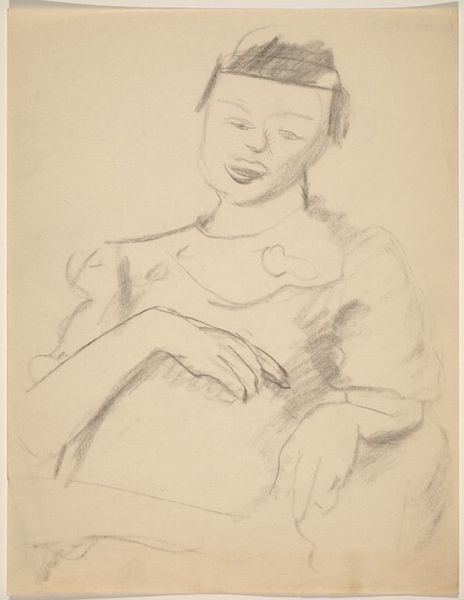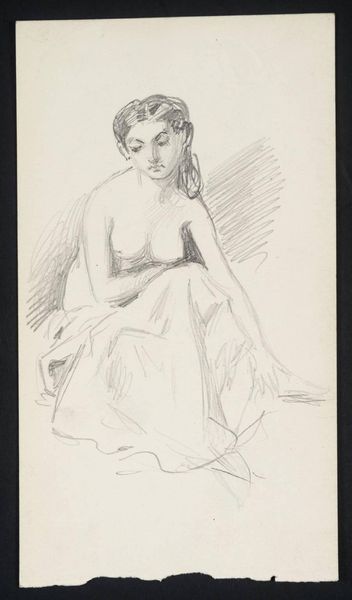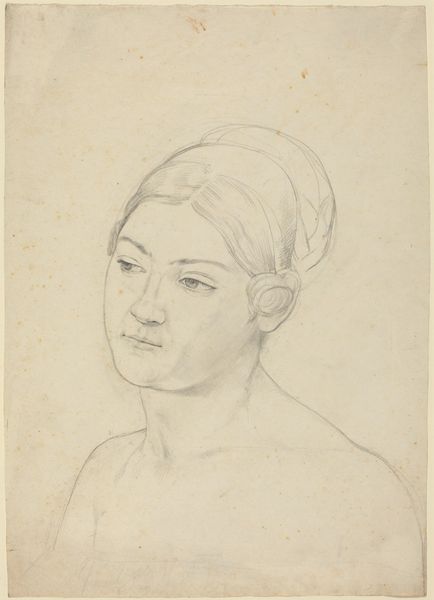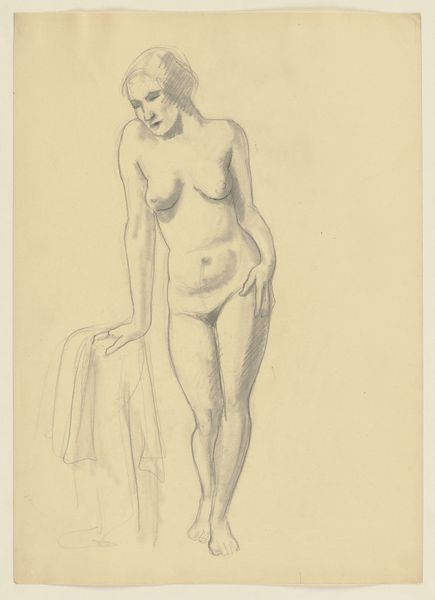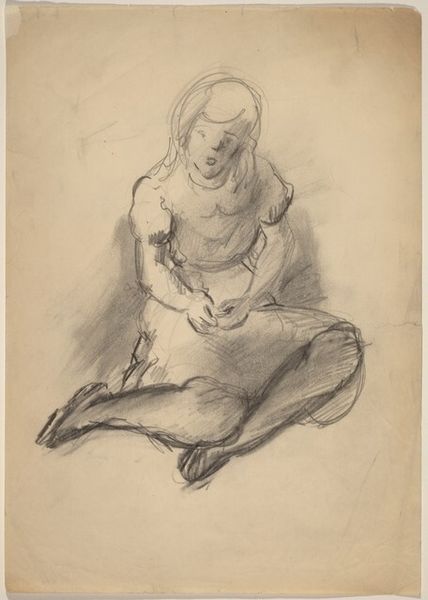
Zittend vrouwelijk naakt, in driekwart naar rechts, ten halven lijve 1839 - 1890
0:00
0:00
drawing, pencil
#
portrait
#
pencil drawn
#
drawing
#
pencil sketch
#
pencil drawing
#
pencil
#
portrait drawing
#
academic-art
#
nude
#
portrait art
#
realism
Dimensions: height 221 mm, width 198 mm
Copyright: Rijks Museum: Open Domain
Curator: Here we have a pencil drawing by Auguste Toulmouche, a work titled "Zittend vrouwelijk naakt, in driekwart naar rechts, ten halven lijve"—or "Seated Female Nude, in Three-Quarter View to the Right, Half-Length." It's held in the collection of the Rijksmuseum and its date is estimated between 1839 and 1890. Editor: It’s incredibly delicate, almost tentative. The soft grey of the pencil against the paper gives it a gentle, contemplative mood. It has this unfinished, immediate quality. Curator: The Academic style is very present here. We see the focus on anatomical accuracy tempered with a sense of idealised beauty. Nudes in art carried powerful symbolic weight, often alluding to notions of vulnerability, beauty, and even classical ideals. This sketch would be an exercise in form for the artist. Editor: I'm struck by the composition, actually. Toulmouche positions the sitter in a way that leads your eye directly from the loose knot in her hair, following her gaze down toward her chest. A diagonal rhythm emerges through shadow and the very subtle shading around the breasts. Curator: Absolutely. In much art of this period, the nude becomes an emblem, representing perhaps more broadly the artist’s attempt to access some notion of universal, eternal beauty—think of Venus figures across history. Even in a drawing like this. This seated female nude embodies that idea, made timeless in the gaze that meets us through those early conventions. Editor: Conventions tempered by the freshness of the medium, perhaps. I can feel the artist's hand moving across the paper, trying to capture something very elusive about the shape of a shoulder, or the fall of light. There's something so very fleeting that lends to a mood beyond those traditional symbolic reads. Curator: I agree. It makes one ponder on our endless attempts to translate human emotion, experience, through simple forms of pencil and pigment. Editor: And to celebrate them, and look into ourselves through that recognition. A figure reflected in shades of grey, revealing some fundamental quality.
Comments
No comments
Be the first to comment and join the conversation on the ultimate creative platform.
